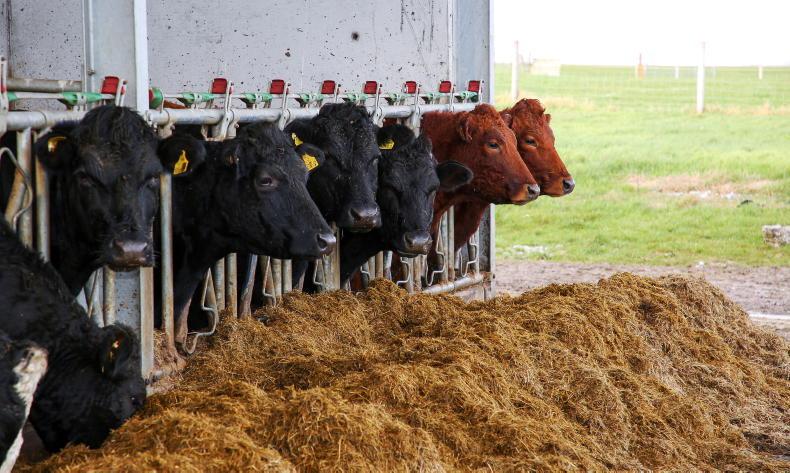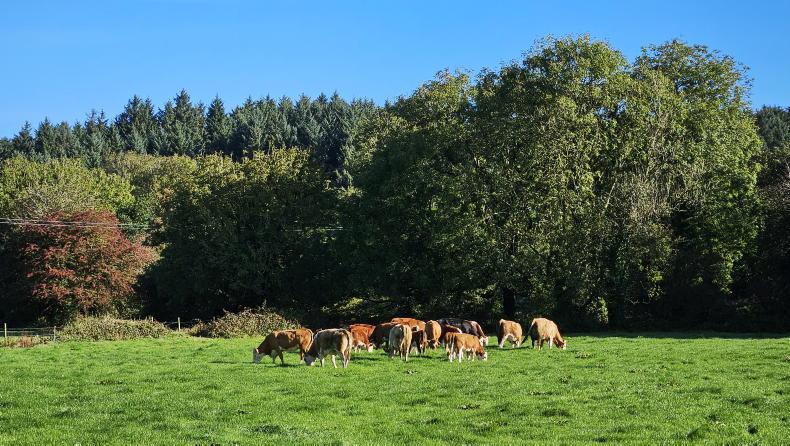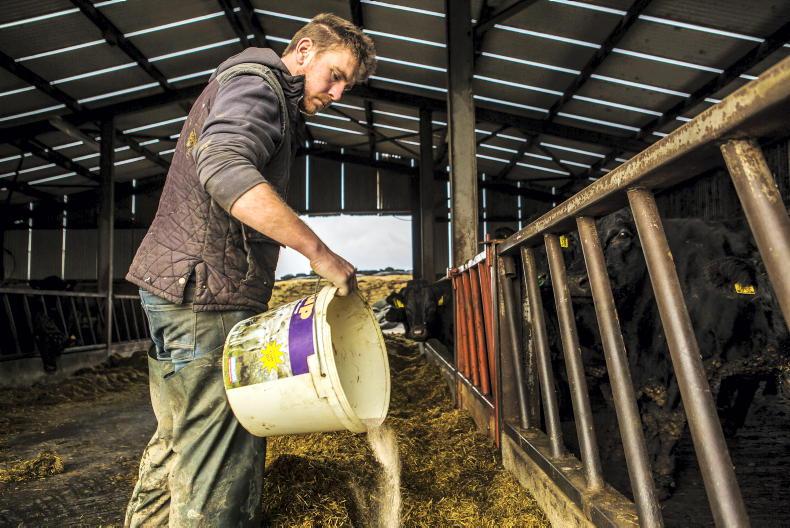When problems arise when a cow is calving or when the newborn calf hits the ground, calving aids are invaluable, provided they are used correctly. Outlined are some tips to using aids.
1. Gloves and calving lubricant
When checking calf presentation or assisting during labour, always wear gloves. Without gloves, dirt and bacteria can be transferred inside the cow, causing infection.
When using arm-length plastic gloves, it can be difficult to grip the calf’s legs. Wearing a latex or nitrile hand glove over the arm-length glove will increase grip.
A proper obstetric calving lubricant is essential during calving. Applying lubricant to the head and legs is straight forward. Getting lubricant further inside the birth canal is much more difficult.
A good tip is to use a large syringe with a piece of flexible piping from an old stomach tube attached. Position the piping at the shoulders, if possible, then discharge lubricant using the syringe.
2. Double-loop the leg ropes to spread pressure
Most farmers will attach the leg ropes with a single loop above the fetlock, before pulling by hand or the jack.
While this is fine, it concentrates the pulling force on one point on the calf’s legs. Placing a second loop below the fetlock helps spread the pulling force, reducing the risk of breaking a calf’s leg.
Also, position ropes so loop knots are on the underside of the leg, stopping them digging into the calf’s limbs when under tension.
3. Using the calving jack
The calving jack should be used when a calf is coming backwards or when it is not possible to pull by hand.
Ideally, use the jack when the head is presented, as the cow is more likely to be fully dilated at this point.
Position the head frame so it rests on the pin bones. Attach leg ropes and take up the slack. To check the tension is ok, both ropes should touch when squeezed together by hand.
The jack is designed to lever downwards when cows push. After each push, straighten the bar, then use the ratchet to take up the slack.
Excessive use of the ratchet stretches the calf out, narrowing the front shoulders, which constricts the lungs and the calf’s ability to breathe.
If held in that position, a calf will die within minutes. Therefore, during a difficult labour, release the tension every so often to let the calf attempt to breathe.
4. Head ropes
In the wrong hands, head ropes are lethal. Never attach the head rope to the jack. It should only be pulled by hand with equal pressure on both ends of the rope.
Position around the back of the head, under the ears and below the chin. Do not place the rope through the calf’s jaw, as it will cause fractures.
5. Stomach tube
When using a stomach tube, make sure it has been sterilised before use with boiling water. This will also make the pipe more malleable.
Tie the top of the bag to a gate to free up both hands so the tube is correctly fed down the calf’s throat.
Never use the same stomach tube for sick and healthy calves. Sick calves should always have a separate tube, as they will transfer disease to newborn animals before they can absorb colostrum.
Read more
Ten tips for spring calving management
Five safety tips for calving time
When problems arise when a cow is calving or when the newborn calf hits the ground, calving aids are invaluable, provided they are used correctly. Outlined are some tips to using aids.
1. Gloves and calving lubricant
When checking calf presentation or assisting during labour, always wear gloves. Without gloves, dirt and bacteria can be transferred inside the cow, causing infection.
When using arm-length plastic gloves, it can be difficult to grip the calf’s legs. Wearing a latex or nitrile hand glove over the arm-length glove will increase grip.
A proper obstetric calving lubricant is essential during calving. Applying lubricant to the head and legs is straight forward. Getting lubricant further inside the birth canal is much more difficult.
A good tip is to use a large syringe with a piece of flexible piping from an old stomach tube attached. Position the piping at the shoulders, if possible, then discharge lubricant using the syringe.
2. Double-loop the leg ropes to spread pressure
Most farmers will attach the leg ropes with a single loop above the fetlock, before pulling by hand or the jack.
While this is fine, it concentrates the pulling force on one point on the calf’s legs. Placing a second loop below the fetlock helps spread the pulling force, reducing the risk of breaking a calf’s leg.
Also, position ropes so loop knots are on the underside of the leg, stopping them digging into the calf’s limbs when under tension.
3. Using the calving jack
The calving jack should be used when a calf is coming backwards or when it is not possible to pull by hand.
Ideally, use the jack when the head is presented, as the cow is more likely to be fully dilated at this point.
Position the head frame so it rests on the pin bones. Attach leg ropes and take up the slack. To check the tension is ok, both ropes should touch when squeezed together by hand.
The jack is designed to lever downwards when cows push. After each push, straighten the bar, then use the ratchet to take up the slack.
Excessive use of the ratchet stretches the calf out, narrowing the front shoulders, which constricts the lungs and the calf’s ability to breathe.
If held in that position, a calf will die within minutes. Therefore, during a difficult labour, release the tension every so often to let the calf attempt to breathe.
4. Head ropes
In the wrong hands, head ropes are lethal. Never attach the head rope to the jack. It should only be pulled by hand with equal pressure on both ends of the rope.
Position around the back of the head, under the ears and below the chin. Do not place the rope through the calf’s jaw, as it will cause fractures.
5. Stomach tube
When using a stomach tube, make sure it has been sterilised before use with boiling water. This will also make the pipe more malleable.
Tie the top of the bag to a gate to free up both hands so the tube is correctly fed down the calf’s throat.
Never use the same stomach tube for sick and healthy calves. Sick calves should always have a separate tube, as they will transfer disease to newborn animals before they can absorb colostrum.
Read more
Ten tips for spring calving management
Five safety tips for calving time










SHARING OPTIONS